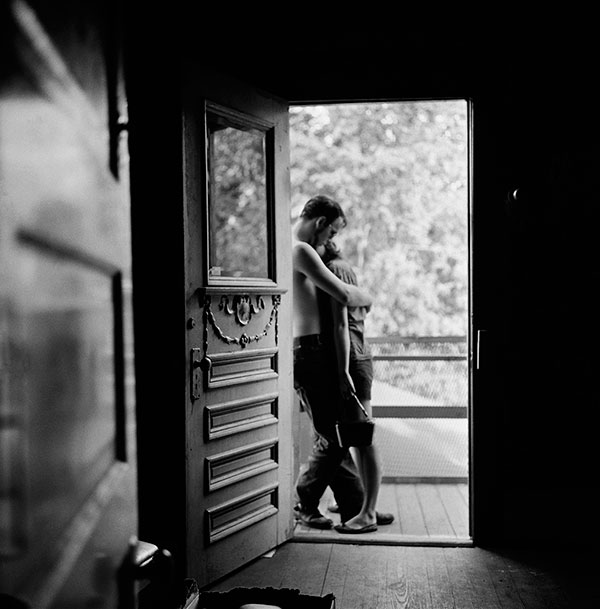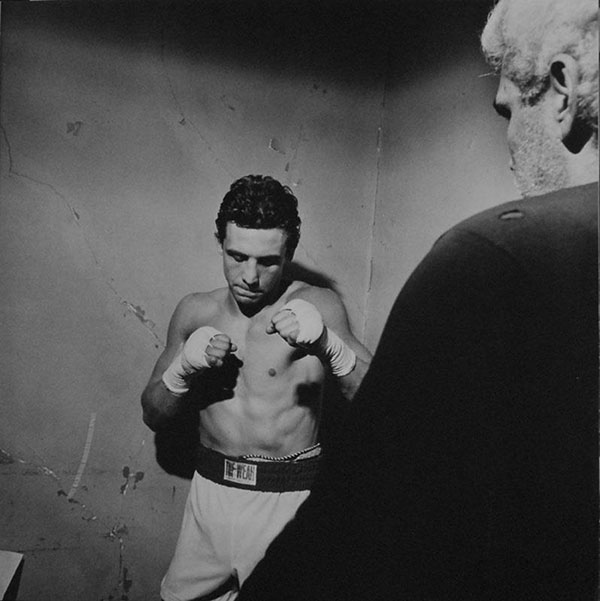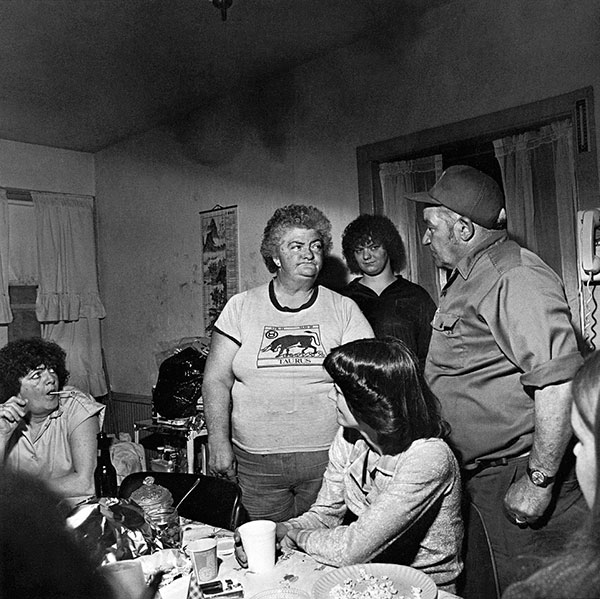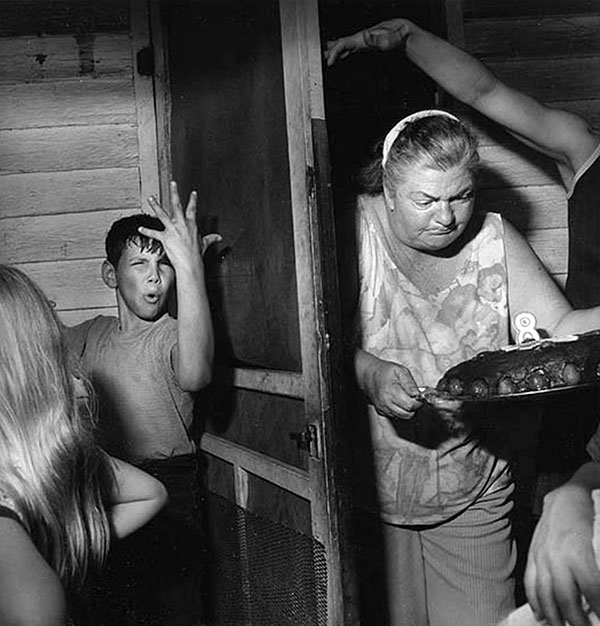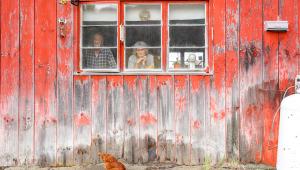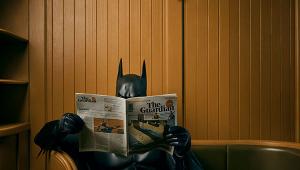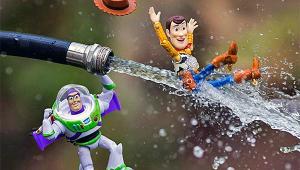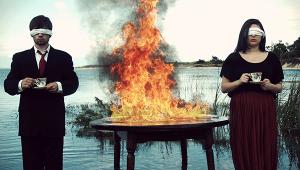Outsider Art: Larry Fink’s Striking Black-and-White Photos Capture Worlds Many Never See

The way I shoot is I’m slow as a bear and then fast as a hare. So I just linger and watch and then pooom!” – Larry Fink
Social documentary photographer Larry Fink, who’s well known for his striking black-and-white images of high society and the down-and-out, was honored at the 2015 Infinity Awards gala at the International Center for Photography a few months ago. In attendance at this sumptuous event were celebrities including the model Naomi Campbell, the actor Alan Rickman and photographers Steve McCurry, Susan Meiselas, Sylvia Plachy and others.
These were the kind of celebrities that Fink had photographed for nearly six decades from his unique perspective and now they were celebrating his career with a major award. The irony was not lost on him.
From his images of the wild and crazy nights at New York City's Studio 54 in the 1970s to Vanity Fair’s glitter filled Oscar parties in the 2000s, Fink has been the ultimate outsider working on the inside.

Fink began his photographic career in the 1960s in Greenwich Village’s vibrant jazz scene and in the chaotic underground world of the “Beat” poets. Then he began to photograph the flip side of the social spectrum: New York’s elite at play at expensive, alcohol-fueled parties. He would go to society events, brazenly mingling and photographing everything with the jaundiced eye of a Brooklyn street kid.
“I entered the above ground world aggressively but also through improvisation and a certain grounded craziness,” Fink says. “I went far up into its reaches, working for Vanity Fair.”
Giving Fink the Award For Art was ICP recognition that although Fink’s images were outside the traditional definition of photojournalism he is a major figure in American photography. It also recognizes his role as a teacher and his influence on a generation of new photographers.

Beginnings
Larry Fink was born in Brooklyn in 1941 and describes himself as a “Marxist from Long Island.” He remembers that his mother would talk about the coming workers revolution over her martinis. Like so many kids of his generation from the outer boroughs of New York he was inevitably drawn to Greenwich Village’s bohemian underground. He photographed the Beat poets and was becoming a part of the drug scene, but that ended one day when he and some friends were driving to West Coast.
“I really need to thank United States Department of Justice for having me arrested at the border of Laredo, Texas. They found that I was smuggling one quarter of an ounce of marijuana. The way they arrested us, my friends Cleon, the drummer, and Ackerman, the poet, was by rounding us up in a kind of road block and motor assault and as we, hands high above our heads, left our Oldsmobile Super 88, Gatling machine guns were being shot in the ground in front and around us. It was an action fitting for 17-to-21-year-old hipster Beatniks, we surmise. At any rate, this stopped my forward trajectory to be an airheaded wanderer without boundaries. I served five years of federal probation under the tutelage of a very kind probation officer, William Guerra, and settled down to become the photographer who I am today.”
Returning to New York he studied photography at the New School for Social Research with the famous photographer/teacher Lisette Model. Model encouraged him and he began to see himself as a photographer.
In 1968, Fink was hired to cover the Metropolitan Museum of Art’s centennial ball and it was the first time he brought a flash along. It was for him “an exhilarating revelation of power.”
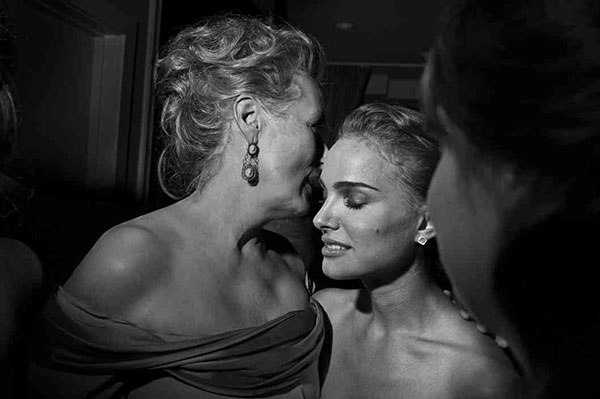
Social Graces
By 1972 he had switched from 35mm to a square format twin-lens and always used the portable flash. With this gear, Fink says he felt like an undercover agent in the tradition of his artistic heroes Francisco de Goya, George Grosz and Otto Dix. His flash-powered images are also reminiscent of photographs of the cranky, cigar smoking New York street photographer Arthur Felig, better known as “Weegee the Famous.”
Fink’s photographic themes are similar too. In the 1970s, he worked on a self-assigned project called Social Graces. His photographs contrasted the fashionable “society” world of Manhattan’s elite with the daily life of the Sabatines a working class family in rural Pennsylvania. It was shown in 1979 as a solo exhibition at NYC’s Museum of Modern Art and as a New York Times reviewer wrote, the photos explored social class by comparing “two radically divergent worlds while accomplishing one of the things that straight photography does best: providing excruciatingly intimate glimpses of real people and their all-too-fallibly-human lives."
The Sabatine family lived in the Pennsylvania hills and their lives were hard and chaotic. Today the family is spread across the hills and hardly speaks to each other. While Fink has compassion for their struggles and feels bad about losing touch with them, he speaks very differently about the rich he photographed. “[T]he debs and balls are still focused on impression...(yet)...somehow hollow, arrogant and unsure,” he says.
Social Graces is just one of Fink’s many books of photographs that demonstrate the extent of his interests. They range from a collection of photographs from the Vanity Fair parties, The Vanities: Hollywood Parties 2000–2009: Photographs (2011) to Runway (1999) about fashion to the world of Boxing (1997). Then in 2014, drawing upon his years of teaching photography at Bard College he produced Larry Fink on Composition and Improvisation (New York, Aperture).

The Consummate Outsider
In 1994 Vanity Fair held its first post-Oscars, star-filled party. From 2000-2009 Fink was one of the photographers selected by publisher Graydon Carter to photograph the event. In a 2009 interview he was asked what it was like to photographs all those stars. In classic Fink style he replied, “I’m the only photographer who, in the beginning, didn’t know who anybody was. I’m the sort of person who doesn’t recognize people right away anyhow, because I am looking at them in a primary kind of way, like a baby would be: ‘Look at that nose or those eyes,’ or something.”
Fink readily admits he was hardly an objective reporter. He says that at these events he was bearing witness to the “vanity, mendacity avarice and gluttony…of the captains of industry and their leathery wives.”
When ICP asked Fink for a portfolio for consideration for an Infinity Award, Fink was surprised. “I’ve always thought of myself— even though I’m a friendly guy—as an outside player,” he said. “I just kind of consider myself on the outskirts of the art scene. Because of my character.”

His subjectivity, his “outsider” looking in status, was probably part of the reason he received the Award for Art. His anti-elitist bias clearly falls outside of what some would call “journalistic neutrality.”
Fink is aware that his outsider attitude intrudes on objectivity but feels that his attitude helps viewers to understand his experience of the moment as he felt it. Fink also realizes that his stance as an outsider is more ambiguous now that he is a “photography grand master” receiving awards and recognition.
In the past few years besides the ICP award, he has also exhibited at Musée de l'Elysée in Lausanne, Switzerland, the Museum of Photography in Charleroi, Belgium and has had a retrospective of his work displayed in six different museums across Spain.

And the old rebel is actually enjoying the accolades and the attention. The ICP Award has resulted in interviews and shows and an invitation to next year’s Recontres d’Arles Photography Festival in France.
However despite all the new attention, interviews and travel, Fink and his wife Martha Posner try to maintain some distance from the hubbub. They live on a farm in the gently rolling hills of Pennsylvania’s Lehigh Valley. It is a retreat for Fink, where he spends his days working the land and writing poetry.
See more of Fink's work below and on his website.
